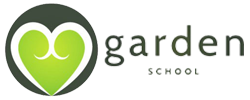by Susan Dean | Feb 2, 2018 | Health, Kitchen Recipes, Medicinal Recipes
Going through a whole body detox to clear your issue and symptoms is often needed to truly feel your best. Consuming whole foods, high in raw fruit and vegetables, and removing processed foods from your diet is the way your body can heal. Some of the natural ways:
Aching Joints (arthritis, joint pain, gout): stinging nettles (make into a tea and use topically for painful joints), cayenne pepper, grape juice, celery, comfrey, rosemary, St. John’s Wort
Aching Muscles: consume magnesium rich foods like spinach, swiss chard, squash and pumpkin seeds, sunflower seeds, almonds, cashews, sesame seeds and flax seeds. You can rub apple cider vinegar on muscle/cramps or use essential oils like basil, and marjoram.
Acidity: eat a high-alkaline diet rich in leafy greens and herbs. Cloves help with gastritis, and mint helps combat acidity and indigestion.
Acne: caused by bad diet, lots of processed foods – reduce amount of processed foods consumed and follow a whole foods, high raw lifestyle to help detox and regenerate the body. Tea tree oil helps combat acne since it is a strong antibacterial. Apply tea tree oil directly to your blemish in a little bit of carrier oil like jojoba oil.
Allergies (i.e., Hay Fever): make teas to help reduce allergen symptoms. Drink teas like nettle, and echinacea.
Alzheimer’s Disease: rosemary and high-antioxidant foods like berries help strengthen neuronal connections in the brain.
Anti-inflammatory (arthritis, gout, inflammatory diseases): ginger, cayenne, and turmeric; these three foods combat the inflammatory response in the body.
Anxiety: calm your nerves with chamomile and lavender. Practice breathing techniques, meditation & yoga.
Asthma: cayenne or lobelia. Decrease protein intake to 10% of your daily calories, and eliminate all milk and milk products. Eat organically grown fruits and vegetables and ginger and turmeric daily for anti-inflammatory relief.
Bad Breath: deodorizing herbs like parsley, dill, fennel and mint. Juice them, put them in smoothies, or salads. Chew a dill seed!
Bloating: drink peppermint tea, or chew on some fennel seeds. Often caused by heavily processed foods and bad food combining (aka. eating sweet and acid fruits together).
Blood Pressure (high): basil and celery. Eliminate sodium from diet.
Blood Tonic: beets! They help re-build our blood cells and prevent anemia.
Boils: put a little bit of goldenseal or echinacea drops onto your boils to help them heal.
Broken Bones: eat lots of calcium rich plant foods like broccoli, leafy greens, bok choy and chia seeds. Get ample vitamin D from the sun (go sit out in the sun – use some coconut oil for a natural SPF).
Bronchitis: oregano oil, contains carvacrol which is a phenol anti-microbial and anti-inflammatory that eases chest congestion and eradicates disease. Take 5-10 drops of pure oregano oil in a bit of water twice per day until symptoms subside.
Bruises: arnica gel or aloe vera. Apply a cold press to your bruise and then apply these remedies after 10-15 minutes of cold pressing.
Consume pineapple too! It contains bromelain which is a powerful anti-inflammatory.
Chills: ginger – helps stimulate digestive fires.
High Cholesterol: reduce animal products, and consume a high raw plant based diet. Eat lots of green foods like broccoli sprouts, chlorella, spirulina, sea vegetables, leafy greens and dark green vegetables (broccoli, bok choy, etc.)
Poor Circulation: cayenne pepper & ginger helps dilate blood vessels, which helps improve circulation.
Cold Sores: take L-lysine supplement, or use tea tree oil and garlic to kill the virus. Hold garlic on the cold sore, or use tea tree oil as a topical supplement.
Colds: eat lots of lemon, and drink plenty echinacea tea. Eat 1-2 cloves of garlic twice daily and drink 3-4 L water. Get lots of rest.
Poor Concentration: maca root and ginseng help improve concentration, as well as high-antioxidant foods like organic berries.
Congestion: cayenne pepper and ginger help open up sinus cavities.
Coughs: help soothe your throat with lemon and raw honey.
Cramps: rub some peppermint oil on your abdomen (dilute with carrier oil like jojoba), and my favorite, use a hot water bottle. Ginger tea also helps stop cramps and pain.
Diarrhea: eat more foods high in fiber like fruit and vegetables, and eat them raw to ensure you get live enzymes and pre-biotics to help ensure healthy gut flora.
Diuretic: celery and watermelon act as great diuretics.
Drug Addiction: plant medicines like ayahuasca have helped numerous individuals get over their drug addictions – do your research, use google. You will likely need to travel to peru if you want to see a true shamanic master healer.
Dry Skin: often a cause of a dehydrated diet. Eat hydrating foods like fruit and vegetables, and get rid of processed foods. In the mean time, rub coconut oil or jojoba oil on your skin.
Ear Infection: Make a warm mixture of salt water (1 tsp. salt to 1 cup water) and put in your ear 4 times a day until healed.
Exhaustion: sleep! Get to bed regularly and get rid of stimulating foods that disrupt sleep patterns (caffeine for instance).
Fluid Retention: see diuretics.Gastric Ulcer: eat cabbage! Probiotics in cabbage and the high fiber content are great for healing ulcers of all types.
Headaches: drink 1 litre of water and your headache will likely disappear. If not, try eating some cayenne pepper that will dilate blood vessels and release tension in the head.
Heartburn: Drink 1-4 oz. aloe vera juice.
Itchy Skin: use soothing essential oils like peppermint and lavender.
Jaundice: cleanse your liver and kidneys with dandelion leaves, and dandelion root.
Kidney & Liver Problems: cleanse with dandelion, beet root and herbs (parsley, cilantro, watercress, fennel, arugula)
Menstrual Problems: Chaste berry, and sweet potatoes help regulate hormones.
Nausea (morning sickness, motion sickness): include plenty of ginger in your diet! 4-5 inches in a healing green juice will leave you feeling amazing.
Nosebleeds: this might sound crazy but individuals with nosebleeds who have snorted cayenne pepper have found that this cauterized the blood vessels in their nose, stopping the bleed and permanently stopping future nosebleeds! It hurts and stings during the actual snorting but if you want a quick and easy way out, this is the way to do it. Otherwise, use a cold compress on your nose to help tighten blood vessels and slow blood flow.
Osteoporosis: get rid of dairy and animal products containing acidic protein that is neutralized in the body by alkaline minerals like calcium which is leached from the bones. Eat calcium rich plant foods like broccoli, chia seeds, kale, bok choy and leafy greens.
Overactive Thyroid: get rid of gluten – it increases the autoimmune attack on your thyroid. Eat foods rich in antioxidant molecule Glutathione which boosts your body’s ability to modulate and regulate the immune system, dampen autoimmune flare-ups, and protect and heal thyroid tissue. These foods include asparagus, broccoli, peaches, avocado, spinach, garlic, squash, grapefruit, and raw eggs.
Parasites: parasites hate chlorophyll (what makes plants green). Eat lots of green leafy herbs and vegetables.
Psoriasis: eliminate all dairy and animal products from your diet. Eat whole, fresh raw fruit and vegetables. Get rid of chemical-containing household products and body creams. Soothe the skin with coconut oil (slather it on your skin).
Rashes: coconut oil is a great way to get rid of rashes. It is an anti-inflammatory and anti-bacterial. Slather it over rash area. Also use aloe vera which is cooling and soothes the skin.
Relaxation: chamomile tea helps relax the mind & body.
Scalp Problems: put olive oil in your hair, until evenly coated. Wrap in warm towel and let your hair and scalp soak up the oil. Rinse with warm water and shampoo your hair with a chemical-free, natural shampoo like Dr. Bronner’s.
Scars: rosehip seed oil or vitamin E oil are great at diminishing appearance of scars. Rosehip seed oil actually repairs damaged skin. Put these oils on 3 times a day, for a month or two, and watch your scars disappear!
Sore Gums: chew on some cloves throughout the day.
Sore Throat: ease sore throat pain with ginger tea and echinacea tea.
Sprains: rub peppermint oil on top of area that is sprained.
Stomach Aches: ginger and peppermint tea help ease an upset stomach.
Varicose Veins: caused by poor circulation. Eat things like cayenne peppers and ginger to help stimulate blood flow.
Warming the body: ginger – helps stimulate digestive fires.
Wounds: tea tree oil and oregano oil are great at healing wounds due to their anti-bacterial and anti-septic properties.
by Susan Dean | Feb 2, 2018 | Health, Kitchen Recipes, Medicinal Recipes

Vitamin D is necessary to maintain bone health. Few foods naturally contain significant levels of vitamin D. In order to get adequate vitamin D through diet alone, two servings of fatty fish would have to be consumed every day. Therefore it is important to increase vitamin D in the body through sufficient sun exposure and supplements in order to use the sunshine vitamin’s full potential for maintaining proper body functioning.
Vitamin D is not a stand-alone vitamin. To perform many functions, vitamin D works with other vitamins like magnesium, found in leafy green vegetables. This unique characteristic of vitamin D has contributed to the management of many chronic illnesses. In the past, health care professionals thought vitamin D only kept bones and teeth healthy. Research has put this vitamin in the spotlight by revealing its multifaceted role in the proper functioning of the human body and its ability to lower the risk of illnesses not formerly associated with it. The current lifestyle of working indoors has contributed to the growing number of vitamin D deficiency cases worldwide. This is compounded by the fact that not everyone is aware that he or she may be vitamin D deficient. The best way to discover vitamin D deficiency is to take a blood test that will measure the level of the vitamin in your blood. You are certainly vitamin D deficient if you have any of the following ailments, and you need to consult with your doctor regarding your preventive and curative options as soon as possible.
1) Flu – Vitamin D deficiency predisposes children to respiratory diseases. An intervention study conducted showed that vitamin D reduces the incidence of respiratory infections in children.
2) Muscle Weakness – According to Michael F. Holick, a leading vitamin D expert, muscle weakness is usually caused by vitamin D deficiency because for skeletal muscles to function properly, their vitamin D receptors must be sustained by vitamin D.
3) Psoriasis – In a study published by the UK PubMed central, it was discovered that synthetic vitamin D analogues were found useful in the treatment of psoriasis.
4) Chronic Kidney Disease – According to Holick, patients with advanced chronic kidney diseases (especially those requiring dialysis) are unable to make the active form of vitamin D. These individuals need to take 1,25-dihydroxyvitamin D3 or one of its calcemic analogues to support calcium metabolism, decrease the risk of renal bone disease and regulate parathyroid hormone levels.
5) Diabetes – A study conducted in Finland in which 10,366 children were given 2000 international units (IU)/day of vitamin D3 per day during their first day of life. The children were monitored for 31 years and in all of them, the risk of type 1 diabetes was reduced by 80 percent.
6) Asthma – Vitamin D may reduce the severity of asthma attacks. Research conducted in Japan revealed that asthma attacks in school children were significantly lowered in those subjects taking a daily vitamin D supplement of 1200 IU a day.
7) Periodontal disease – Those suffering from this chronic gum disease that causes swelling and bleeding gums should consider raising their vitamin D levels to produce defensins and cathelicidin, compounds that contain microbial properties and lower the number of bacteria in the mouth.
8) Cardiovascular disease – Congestive heart failure is associated with vitamin D deficiency. Research conducted at Harvard University among nurses found that women with low vitamin D levels had a 67 percent increased risk of developing hypertension.
9) Schizophrenia and Depression – These disorders have been linked to vitamin D deficiency. In a study, it was discovered that maintaining sufficient vitamin D among pregnant women and during childhood was necessary to satisfy the vitamin D receptor in the brain integral for brain development and mental function in later life.
10) Cancer – Researchers at Georgetown University Medical Center in Washington DC discovered a connection between high vitamin D intake and reduced risk of breast cancer. These findings revealed that increased doses of the sunshine vitamin were linked to a 75 percent reduction in overall cancer growth and 50 percent reduction in tumor cases among those already having the disease. Of interest was the capacity of vitamin supplementation to help control the development and growth of breast cancer especially estrogen-sensitive breast cancer.
Prevention is Proactive – A proactive approach to prevention can assist in the avoidance of the many chronic diseases associated with vitamin D deficiency.
8 Common Diseases Linked to Vitamin D deficiency
Vitamin D foods: Salmon, Tuna, Sardines, Egg yolks, Swiss Cheese, Liver, Sun grown mushrooms and sunshine!
Is Vitamin D an anti-cancer agent?
Connections between vitamin D and reducing cancer are being discovered more and more every year. These connections are particularly strong for colon cancer, breast cancer and leukemia.
As researchers found earlier this year, “vitamin D participates in cell growth regulation, apoptosis and cell differentiation. In addition, it has been implicated in the suppression of cancer cell invasion, angiogenesis and metastasis.” Their studies also showed that taking vitamin D can slow down the cMYC function, which means that it may prevent premalignant cells from turning malignant.
Sun avoidance and lack of fatty fish and/or supplements has made vitamin D deficiency common in North America and in many countries worldwide.
Researchers at Montreal’s McGill University have discovered another reason why vitamin D appears to exert cancer-preventive and cancer-curbing effects.
A team led by McGill professors John White and David Goltzman discovered that vitamin D acts in several ways to inhibit the production and function of a key protein called cMYC.
They just published their findings in the latest edition of the prestigious U.S. journal, Proceedings of the National Academy of Sciences.
“We discovered that vitamin D controls both the rate of production and the degradation of cMYC. More importantly, we found that vitamin D strongly stimulates the production of a natural antagonist of cMYC called MXD1, essentially shutting down cMYC function”.
To get your daily dose of vitamin D it is recommended to do the following:
Eat Wild Alaskan Sockeye Salmon
Take Vitamin D supplements
Get daily exposure to sun (about 1o minutes). Do not forget wearing a sunscreen.
Note: Make sure you get your vitamin D supplements from a reputable source.
by Susan Dean | Feb 2, 2018 | Health
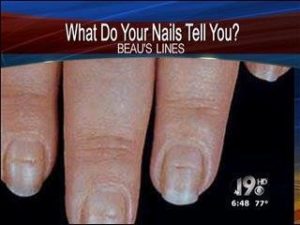
What Your Nails Say about Your Health
Do you know that your nails can serve as a warning sign for your health issues? Yes, it is true; your nails reflect your health. They can show signs of an infectious disease, malnutrition and other chronic diseases.
Your nails and hair are made up of the same material. Nails are formed with a special type of protein called keratin, the same protein you will find in hair and skin. You can divide your nails in 6 parts; the hard protective part is called the nail plate, the skin surrounding it is called nail folds, and the skin underneath the nail plate is called nail bed. At the base of the nail plate you will find a crescent moon-shaped structure called lunula. The tissue that overlaps the nail base is called cuticle.
Every month your finger nail grows from 2 to 3mm and your toe nails grow up to 1 mm. The nails grow out of the area under the cuticle called matrix.
As mentioned before your nail health reflects your physical health. Following are some of the health issues that can be detected by your nails:
Cardiovascular Problems – There are certain changes in the nails that can help to indicate cardiovascular diseases. Splinter hemorrhages is(replace with: are) one such condition in which thin reddish brown lines appear on the nail bed, it indicates vasculitis or heart valve infection. These splinters are actually blood lines.
Clubbing is another condition in which the nails get soft, becomes round and wide and appears to be floating above the nail bed. This condition is caused by congenital heart abnormalities.
Pale blue or yellow tinge of nails and spoon nails also indicate cardiovascular disease.
Stress and Anxiety – 50% of the kids and teenagers in the US are nail-biters. Nail biting indicates conditions like stress, anxiety and boredom. You can avoid biting your nails by stress management techniques and by applying something bitter to the nails, like aloe vera juice.
Diabetes – Painting your nails frequently can cause your nails to develop a yellowish hue, but if your nails remain yellow even without applying nail color then they might indicate diabetes.
Diabetes can cause the skin and nails to get pale. The nails get pale when glucose connects with the collagen protein present in the nails. If you have yellow nails with other symptoms like increased urination and thirst then you should go for a diabetes checkup.
Thyroid Disorders – The thyroid disorders are usually detected with the help of unusual gain or loss in weight. Doctors also link changes in the appearance of nails with thyroid problems.
Onycholysis or Plummer’s nail is a condition in which the tips or sides of the finger nails or toe nails get separated from the nail bed. This condition takes place in hyperthyroidism and most often the nails of the ring finger or little finger are affected. Plummer’s nail can further lead to fungal or bacterial infections so it would be wise to consult a doctor so that you may get treatment for this condition and also for its underlying cause.
Another condition of nails caused by hypothyroidism is “spoon nails”, in which nails look scooped away and concave.
Diseases related to arthritis – There are more than 100 types of arthritis. If your nails are weak because of selenium deficiency then there are chances that you are having osteoarthritis. Splinter hemorrhages, yellow nails or rippled nails are common in conditions like psoriasis. Sometimes connective tissue disorders, also called lupus are indicated by puffy nail folds. In such a condition the skin near the nail base swells.
Sometimes shedding of nails is caused by Kawasaki disease. In conditions like rheumatoid arthritis the lunula turns red.
Pulmonary Problems – If you have blue nails this means you might be having some oxygen –related problem such as asthma, low hemoglobin, pneumonia, emphysema and chronic bronchitis. Apart from these problems, blue nails also indicate heart problems. If you consistently have blue nails it is suggested to consult a doctor.
Injury – Sometimes white spots appear on the nail bed; this condition does not indicate any nutritional deficiency. Instead, these white spots are like bruises and are caused by mild trauma or injury to the nail bed.
Melanoma – Melanoma is one of the worst kind of skin cancers. Acral lentiginous melanoma is also a particular kind of skin cancer that is detectable by observing the nails. If there are dark lines on the nail bed it is better to consult a doctor.
Infections – Fungus infects about 12% of the American population. If your nails become crumbly and thin and if their color changes to blue-green tone then it is better to consult a doctor.
Bacterial infections harm the skin surrounding the nail and also the skin underneath it, this may result in nail loss.
The chances of bacterial infections increase because of vigorous manicuring and also because of unsterilized manicure equipment. It is better to buy your personal manicure tools.
Nutritional Deficiency – Nutritional deficiencies can also be predicted with the help of nail color. Pale nails indicate iron deficiency and anemia.
You can maintain your nail health by consuming lots of proteins and omega-3 fatty acids.
by Susan Dean | Feb 2, 2018 | Health
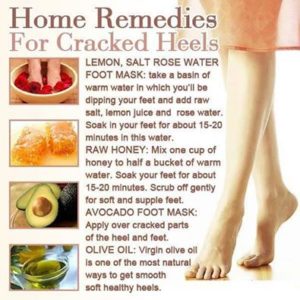
Sage Tea for Darkening Hair
¼ cup apple cider vinegar
1 heaping handful of fresh sage leaves or 2 tablespoons of dried sage
2 cups of water
Bring water almost to a boil, remove from heat, add vinegar and sage leaves, and cover. Let steep for 30 minutes to an hour. The longer it steeps, the stronger. Rinse hair with this several times over a week.
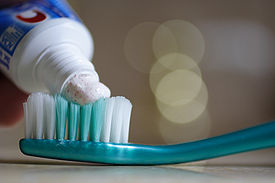 Natural Coconut Oil Toothpaste doesn’t contain hazardous chemicals, fights cavities, has no foaming agents, and is cheap and easy to make!
Natural Coconut Oil Toothpaste doesn’t contain hazardous chemicals, fights cavities, has no foaming agents, and is cheap and easy to make!
½ cup organic coconut oil
2 tbsp baking soda
15-20 drops of peppermint, spearmint, and cinnamon oil or 10 drops of myrrh for powerful antibacterial effects.
Melt or soften oil and mix in other ingredients. Mix well. If using melted coconut oil, stir several times as it cools. Put mixture in a glass jar and it’s ready to use! Use a spoon to apply to brush
The Benefits of Coconut Oil Pulling:
Reduces plaque and gingivitis
Whitens teeth
Reduced bad breath
Healing bleeding gums
Reducing inflammation
Fighting tooth decay
Soothing a dry throat
Preventing cavities
Healing cracked lips
Boosting the immune system
Clearing the complexion and improving acne
Strengthening the jaw and gums
Reduces Streptococcus bacteria
Oil Pulling – Place one tablespoon of coconut oil in mouth, and when liquefied, swish it around for 15 minutes, covering all teeth and gums. Don’t gargle with it. Spit it into a trashcan rather than sink as it can clog drains. Rinse mouth with warm water, and brush teeth as usual. Do this a few times a week, or every day.
By massaging coconut oil into the gums every day for 10 minutes at a time, it can significantly reduce plaque and bacteria that cause decay. Oil pulling and chlorhexidine mouthwash are effective against gingivitis.
Conventional toothpastes contain the antibacterial chemical triclosan, associated with serious concerns about antibiotic resistance and disruption of the endocrine system. Endocrine disrupters can lead to breast, ovarian, prostate, and testicular cancer, preterm and low birth weight babies, precocious puberty in girls, and undescended testicles in boys. Fluoride is a toxic industrial waste that acts as a poison in the body in trace amounts.
Most toothpastes contain chemicals used to create foaming action, such as sodium lauryl sulfate, sodium laureth sulfate (SLS), or sodium lauryl ether sulfate (SLES). Surfactants interfere with the functioning of taste buds by breaking up phospholipids on the tongue. Coconut oil helps to maintain a more natural balance of lipids on the tongue and offers powerful antibacterial properties. SLS has been associated with painful canker sores. Use toothpaste without SLS.

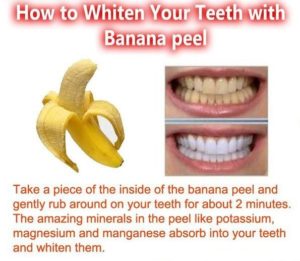
SEA SALT BODY SPRAY
Salt water make your hair look awesome and can also firm your skin. You know how a day at the beach leaves your skin feeling tight. This spray is a version of the same thing. – Wrinkles, pores and cellulite are reduced, but your skin won’t feel dry and parched. This is great for oily and acne prone skin. You’ll absorb the vitamins, minerals and trace elements from the salt through the skin too. Sea salt has a high concentration of calcium, magnesium, potassium and bromide that naturally reduce skin redness, irritation and swelling. Epsom salts draw toxins from the body and are rich in magnesium. You can spritz your face or all the body. No need to rinse!
Use green tea as a base for its powerful antioxidants, tannic acids and polyphenols that sooth red, irritated skin and heal sunburned skin. Use distilled water if you don’t want to refrigerate.
1 cup cool green tea (or distilled water or other tea)
1 teaspoon Aloe Vera
1 tablespoon sea salt
Pinch of Epsom salt
2-3 drops of essential oil
Steep tea in very hot water for 5 minutes. Then discard tea bag. Combine all ingredients except Aloe Vera in a reusable spray bottle. Shake well to dissolve salt. Let cool completely then add Aloe Vera. Keep refrigerated.
SEA SPRAY FOR HAIR
Sea salt is great for oily hair as it naturally pulls out oil and moisture. To counteract the drying effects of the salt, add a small amount of oil to condition the hair.
Using chamomile tea and lemon juice will naturally lighten your hair as well. But if you use tea as a base, the spray will need to be refrigerated.
1 cup of hot chamomile tea (or distilled water if you don’t want to refrigerate)
1 tablespoon Epsom salt
Pinch of sea salt
1 teaspoon Aloe Vera gel
1 teaspoon coconut, almond or jojoba oil
4-5 drops of essential oil – like lavender or grapefruit
1 teaspoon lemon juice (for additional lightening)
Steep tea in very hot water for 5 minutes. Discard tea bags. Combine ingredients except Aloe Vera and lemon juice in a reusable spray bottle. Shake well to dissolve salt. Let cool completely then add Aloe Vera and lemon juice. Shake before each use and spray on clean, damp hair. Scrunch and twist with your hands to define waves.
Let hair air-dry. Apply more spray to dry hair for a stronger hold.
Parsley Tea contains immune-enhancing vitamins (C and A) and is a powerful antioxidant. Vitamin C, not only nourishes skin, it reduces scars and blemishes and stimulates the production of collagen, which is the key to cell reproduction and repair. Flat leaf (Italian) parsley is more fragrant and less bitter than the curly leafed kind. Drink this tea for a month and you may find your face was spotless.
Soak parsley in water with a splash of vinegar.
Wrap in a towel and store in the fridge.
Bring a small saucepan of filtered water to a boil.
Put ¼ cup of parsley in a cup or teapot.
Pour the boiling water on top, let steep for 5-6 minutes
Splash of fresh lemon

12 Tips to Slow Down the Appearance of Varicose Veins
- Be aware if you are standing for long periods of time shake your legs every so often to prevent the accumulation of blood.
- Flex your feet. By contracting the muscles in your feet it can help force blood upward and out of the veins. If you are sat down for any period of time try flexing your foot up and down as you would when you pump a gas pedal or piano pedal. Also rotate your feet clockwise and counterclockwise to get the ankles moving and the blood pumping.
- Do not sit cross-legged; it increases pressure on the leg veins.
- Gentle exercise such as swimming and walking can strengthen the walls of the blood vessels and prevent or delay the development of prominent veins.
- Avoid strenuous physical activity that can put heavy pressure on the veins, e.g weight training.
- By sitting or lying down with your legs slightly elevated will improve the blood flow from the legs to the heart. If your legs are very swollen try sleeping with your legs elevated, forcing the blood up out of your feet and legs.
- By having cold or lukewarm showers you can shrink the veins.
- To stop swollen veins from getting worse it is recommended to apply elastic stockings or elastic bandages that provide support.
- Be aware of your weight, if you are overweight it will put unnecessary pressure on your veins.
- Take Vitamin B, vitamin C and zinc to help maintain the elasticity of blood vessels and strengthen their walls, this can prevent or delay the appearance of varicose veins.
- Wear elastic socks on long haul flights. Talk to your physician and if you have a prescription take blood thinners such as aspirin, which help to prevent blood clots and venous thrombosis.
- Get yourself some comfy shoes that have laces that can be loosened if needed and keep your high heels for special occasions. Walking in high heels can aggravate varicose veins.

Anti-age spot mixture
Dice a fresh onion. Transfer the bits into a Ziploc bag and pulverize them with a blunt surface. Afterwards, process the onion with half a cup of organic apple cider vinegar in a blender. Blend until you get a smooth texture. Soak one cotton ball in the mixture and apply it directly on your age spots. For optimal results do this every day for 2-4 weeks. Notice the first results within a couple of weeks.
Clear Skin of Blemishes and Freckles
Homemade cream of parsley leaf will relieve your skin of those pigmented spots and get rid of freckles! Parsley is rich in vitamins and minerals. The juice from it contains many essential oils and it has a high concentration of magnesium and potassium, both critical to staying healthy. It has been used to remedy fevers, kidney disease, urinary tract infections, Diabetes, and inflammation of the eyes.
Being able to remove redness, swelling, irritation, as well as bleaching the skin. Parsley leaf is a key in fixing those minor facial problems you may suffer from.
Parsley Facial Recipe
Four tablespoons of fresh or dried parsley leaf
400 ml of boiling water
Two teaspoons of apple cider vinegar or lemon juice whichever you prefer.
Let water come to a boil. Chop parsley, add to the boiling water, and cook for about twenty minutes. Remove from heat and let cool. Strain and add lemon juice or apple cider vinegar. Use on your skin when you get up and before you go to sleep.
This will tighten the pores of your face and whiten your skin dramatically. The properties in parsley will help to get rid of freckles. Keep this lotion in the fridge and use everyday. In a few weeks, you will notice the difference in.
Get Rid of Wrinkles?
This toner can tone your face to get rid of those pesky wrinkles. Wrinkles are a sign of aging where the cells of the skin divide more slowly and dermis starts to thin. Facial expressions have been said to make certain wrinkles more prominent with age. Smoking also causes wrinkles, because smoking curbs the skin’s production of collagen, which is the main component of skin’s structure. If you want to reduce wrinkles, try this recipe.
• 2 lemons
• 1 glass of beer
• 1 glass of rose water
Juice lemons. Add the beer and rose water together and stir well. Clean the face and apply the mixture to the face. For best results put the mixture on before bed and leave it overnight.
Shampoos and Soaps You probably thought that the worst thing your shampoo could do to you is to burn your eyes, but it turns out that your shampoo could be deadly. The Center for Environmental Health based in Oakland, California, performed a study on shampoos and soaps and found that 98 included a possible carcinogen known as cocamide diethanolamine (cocamide DEA).
Cocamide Diethanolamine (cocamide DEA), a controversial ingredient found in body care items, has landed four personal care manufacturers with a lawsuit in California.
The Center for Environmental Health filed the suit after discovering the presence of cocamide DEA, the foam stabilizer and volumizer, in shampoos and soaps. In the state of California, Proposition 65 requires manufacturers to warn consumers over the risks of certain substances. Cocamide DEA is on that list because it is a suspected carcinogen. It was banned in the state last year after a study found it caused cancer in laboratory animals.
Some of the products that contain high levels of the illegal chemical are sold under well-known companies such as Colgate Palmolive, Paul Mitchell, and Prell. Lab tests also found the carcinogen in children’s products, such as a store brand bubble bath from KMart, and a shampoo/conditioner from Babies R Us. Other store brand products that contain the carcinogen came from Trader Joe’s, Walmart, and Kohl’s.

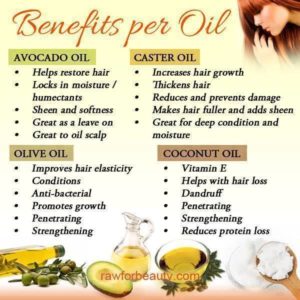
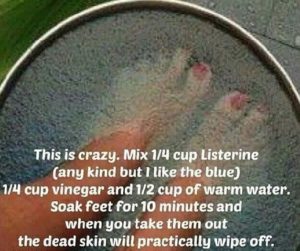
Natural Hair Growth Serum Ingredients:1 cup distilled water
2 Tablespoons Dried Nettle Leaf
2 Tablespoons Horsetail Leaf (optional)
2 Tablespoons Natural Aloe Vera Gel
10 drops of Clary Sage Essential Oil
10 drops of Rosemary Essential Oil
10 drops of Lavender Essential Oil
How to Make Hair Growth Serum:
Boil the distilled water and add the dried nettle leaf and horsetail leaf.
Let the herbs sit in the water for at least 10 minutes or until water cools.
Strain the herbs out and pour the herb infused liquid in to a spray bottle.
Add the aloe vera and essential oils and shake well.
Store in the fridge for up to 3 months and shake well before us.
How to Use this Hair Growth Serum:
Spray liberally on hair roots once or more per day. I found that it was easiest and worked the best to spray on before bed each night.
 Amazing Beauty Benefits of Tea.
Amazing Beauty Benefits of Tea.
1. Adds shine to dull, lackluster hair. A hair rinse using green or black tea will boost brassy and blah strands. Steep tea bags in boiling water for 15 minutes and allow to cool. Pour it onto freshly-washed hair and leave on for ten minutes. Shampoo and condition afterwards to seal in the shine.
2. Soothes sunburns. Missed a spot with the sunscreen and ended up with a sunburn? Cold compresses made out of tea bags can relieve pain and reduce redness.
3. Minimizes bug bites. To take down the sting and bumps, apply a used cold chamomile tea bag directly to the area and relax.
4. Reduces puffy eyes and dark under-eye circles.. The caffeine helps to shrink blood vessels underneath the skin and eliminate darkness around the eye area.
5. Rids smelly feet odor. Soak feet in a cool solution made of boiled tea. Tannic acid in tea is antibacterial and antifungal. It stops feet from sweating and smelling.
6. Tones and moisturizes dry skin. Spritz cool green tea onto your face twice a day to draw out impurities, shrink large pores and get a healthy glow.
7. If your legs are itchy and red after shaving, press a cool black tea bag onto your limbs. The tannins provide immediate relief from razor burns.
8. If you’re looking for a chemical-free alternative to dyeing your hair, try using tea. Its staining properties add color to naturally blonde or brunette locks.
 SKIN TAGS – In most instances a skin tag is a harmless, benign tumor. Once you have checked with your physician and determined this, here are some natural ways to remove them:
Tea Trea Oil– Tea tree oil works very well for removing skin tags as well as moles. In fact, tea tree oil is used on various skin disorders. To use this all you need is a little tea tree oil and a cotton ball. Soak the cotton ball in the oil and apply it directly to the affected area. Do this once or twice daily for up to 4 weeks or until the skin tag vanishes.
Castor Oil– can be taken both internally and externally. Take a little baking soda and mix it with the castor oil to create a paste. Add some citrus oil as it will stink to high heaven. Apply it to the affected area and cover with a band-aid. The typical time it will take is 2-4 weeks before the skin tag vanishes.
SKIN TAGS – In most instances a skin tag is a harmless, benign tumor. Once you have checked with your physician and determined this, here are some natural ways to remove them:
Tea Trea Oil– Tea tree oil works very well for removing skin tags as well as moles. In fact, tea tree oil is used on various skin disorders. To use this all you need is a little tea tree oil and a cotton ball. Soak the cotton ball in the oil and apply it directly to the affected area. Do this once or twice daily for up to 4 weeks or until the skin tag vanishes.
Castor Oil– can be taken both internally and externally. Take a little baking soda and mix it with the castor oil to create a paste. Add some citrus oil as it will stink to high heaven. Apply it to the affected area and cover with a band-aid. The typical time it will take is 2-4 weeks before the skin tag vanishes.
Apple Cider Vinegar-Apple cider vinegar works well for removing skin tags. Just like tea tree oil, you simply dab some directly to the skin tag. Unlike the tea tree oil, Apple Cider vinegar may cause a stinging sensation for a couple minutes after being applied. Typical time until the skin tag vanishes is 2-4 weeks.
Oregano Oil – This oil works very well for removal of skin tags. Apply the same as for Tea Tree oil. It is strong so may need to be diluted. Use extra caution when using any remedy on the face.


Homemade Natural Wrinkle Removers:
Even though they say wrinkles make you wiser, there are many ways to look wiser without the wrinkles that are natural, there is no need to buy expensive anti-aging cream or treatments. You won’t need to expend more than a couple of bucks… here is where the real wisdom is. Bananas and their peel have been used for centuries to help with many skin conditions, including acne, wrinkles, warts, psoriasis and poison ivy.
1. Mash a banana until it has a creamy texture and apply it to your entire face for 30 minutes, bananas have so much more going for them than just a delicious and nutritious treat.
2. Coconut oil is the best option when it comes to natural wrinkle removal, since it rebuilds our skin tissue and will also leave your face skin moisturized and feeling smooth and beautiful.
3. Pineapple juice can easily rival any treatment, in fact it is much better, because they are packed with the enzyme bromelain which naturally eats away our top layer of skin when applied topically and leaves the new fresh skin underneath.

Sunscreen Accelerates Cancer and Blocks Vitamin D Generation
Excerpts from an article by Joe Martino
The sun has never ever been linked to solely causing skin cancer. This myth was brought forward by the sunscreen industry, dermatologists and the cancer industry.
If you don’t use sunscreen your skin may burn. I say may because not everyone’s skin will burn. It depends on the health of your skin. If you are deficient in antioxidants and vitamin B, you are much more likely to get a sunburn as your skin is not healthy enough to take in the UV rays properly. Those with darker skin are able to have their skin act as a built in sunscreen.
Get your body well maintained with proper high quality nutrients, specifically vitamin B and antioxidants. Most diets contain eating a lot of acidic foods, fried-meats, heavy dairy products, fast foods and acidic pop. This is a perfect reason as to why many people will get burned in the sun. Their diets don’t contain healthy foods and their skin isn’t nutrient dense enough.
Sunscreen blocks the bodies ability to generate any vitamin D from the sun. Not only does it have a boatload of chemicals in it, it makes you vitamin deficient. There are easy natural ways of protecting your skin, why use chemicals that cause cancer and make you vitamin deficient?
Vitamin D is a very important nutrient to have proper amounts of in your body as it is responsible for the decrease of 4 out of 5 cancers of every kind as well as many other diseases when levels are properly maintained in the body.
Environmental Working Group, a Washington-based nonprofit, released their annual report that nearly half of the 500 most popular sunscreen products may actually increase the speed at which malignant cells develop and spread skin cancer because they contain vitamin A and its derivatives, retinol and retinyl palmitate. The FDA has known about the dangers of vitamin A in sunscreens since ordering a study 10 years ago, but has done nothing to alert the public of the dangers. “Retinyl palmitate was selected by (FDA’s) Center for Food Safety and Applied Nutrition for photo-toxicity and photocarcinogenicity testing based on the widespread use of this compound in cosmetic products for use on sun-exposed skin,” said an October 2000 report by the National Toxicology Program.
According to AOL news, other problems with sunscreens include the use of the hormone-disrupting chemical oxybenzone, which penetrates the skin and enters the bloodstream, overstated claims about performance, and the lack of needed regulations and oversight by the Food and Drug Administration.
Sun Burn Cream
2 tablespoons of fresh water
1 tablespoon of witch hazel
1 teaspoon of aloe vera gel
2-4 teaspoons of baking soda or cornstarch
1-2 cups of fresh mint leaves, or 1 teaspoon of peppermint oil
2 tablespoons fresh, clean, water
Put 2 tablespoons of fresh water, 1 tablespoon of witch hazel, and 1 teaspoon of aloe vera gel in a small mixing bowl. Stir together and cover, letting the mixture blend and infuse for 2 hours.
After 2 hours, add 2-4 teaspoons of baking soda or cornstarch, and 1-2 cups of roughly chopped fresh mint leaves. If it seems too runny add more baking soda or cornstarch slowly, or if it’s too thick, add small amounts of water slowly until desired consistency is reached.
Transfer to a container with a tight fitting lid, and store in a cool dark place for 24 hours to let the cream fully infuse. Apply as needed.
Oils and Their Natural Sunscreen Power SPF
Carrot Seed Oil SPF 38-40
Red Raspberry Seed Oil SPF 28-5
Wheat Germ Oil SPF 20
Castor Oil SPF 6
Avocado Oil SPF 4-15
Macadamia Nut SPF 6
Shea Butter SPF 3-6
Almond Oil SPF 5
Jojoba Oil SPF 4
Coconut Oil SPF 2-8
Olive Oil SPF 2-8
Sesame Seed Oil SPF 2-4
Best Ever Sunscreen
1/4 cup beeswax
1/2 cup coconut oil
2 fluid ounce raspberry seed oil
1 fluid ounce soybean oil
1 fluid ounce wheat germ oil
2 Tbsp. carrot seed oil
2 Tbsp. aloe vera gel
4 vitamin E capsules
15 drops lavender oil (or your favorite essential oil)
Melt the beeswax in an old pot placed into a large pot with boiling water. Add the coconut oil and wait until it’s almost completely liquid.
Pour the beeswax and coconut oil into a food processor (I use one specifically for all my DIY recipes).
Add the other ingredients and blend well.
Pour your sunscreen into a clean Mason jar, store in a dry, dark and cool place and use like regular sunscreen.
In case you’re wondering about the SPF of this sunscreen I have to admit that I’m not entirely sure. The SPF value of coconut and lavender oil is around 8 and herbs such as aloe vera and wheat germ have been shown to effectively absorb solar radiation and protect the skin from harmful sunrays.
Both vitamin E and the ingredients in carrot seed oil are powerful antioxidants, and soybean oil has a natural SPF of about 10.
Thanks to the beeswax, this sunscreen is even somewhat water-repellent!
Homemade Sunscreen
Zinc Oxide has long been used as an effective and inexpensive sunscreen. Slathered on thick and full strength, it offers excellent sun protection. This is an alternative to the harsh chemicals in store bought sunscreen. Keep in mind that you need to apply this sunscreen more often than commercial sunscreen.
1 teaspoon zinc oxide (available at the pharmacy)
1 tablespoon olive oil
Measure the zinc oxide and olive oil into a bowl and use a fork to mix the ingredients together completely.

MAKE YOUR TEETH ‘SNOWWHITE’
Put a tiny bit of toothpaste into a small cup and mix in:
one teaspoon of baking soda
one teaspoon of hydrogen peroxide
half a teaspoon of water.
Thoroughly mix and then brush your teeth for two minutes. Remember to do it once a week until you have reached the results you want. Once your teeth are good and white, limit yourself to using the whitening treatment once every month or two.
Peppermint Sage Tooth Powder (Makes ½ cup)
2 tablespoons bentonite clay
2 tablespoons baking soda
1 tablespoon dried, finely ground sage leaf
1 tablespoon xylitol (optional for sweetness)
½ tablespoon pure sea salt
15-20 drops peppermint essential oil
Combine dry ingredients in a bowl and mix thoroughly with wooden spoon. Drip essential oils into the mixture and stir well to combine. Transfer to a small container with a tight fitting lid. A small squirt bottle can be used. Note: Bentonite clay loses its beneficial properties when contact with metal, so use plastic or glass when mixing and storing your tooth powder.
Benefits of Ingredients
Bentonite clay – This natural clay has the unique ability to bind to toxins in the body. It is useful in eliminating toxins from heavy metals in your mouth, like mercury from mercury fillings. This clay will never bind to any of the beneficial elements in your body. Bentonite clay is also rich in minerals that can nourish teeth and gums.
Baking soda –Baking soda gently polishes teeth and naturally whitens your smile. Baking soda is less abrasive than most commercial toothpastes.
Sage – Sage has natural tooth-whitening abilities and is known for its astringent properties..
Xylitol –A pinch of stevia powder can be used as a substitute.
Sea salt – Pure sea salt is full of tooth-nourishing minerals, and is especially helpful in healing irritated gums.
Peppermint essential oil – This essential oil has antibacterial, antiseptic, and pain-relieving properties. Peppermint is said to be beneficial for mouth and gum infections. It adds a cool, minty flavor to the tooth powder.



Butters:
Shea butter is processed from a nut that grows in Africa. Shea butter is incredibly nourishing to the skin. It can be used to heal damaged skin as well as further support healthy skin. Shea Butter is an intense moisturizer for dry skin, and is a wonderful product for revitalizing dull or dry skin on the body or scalp. It promotes skin renewal, increases the circulation, and accelerates wound healing.
Mango butter is a semi-hard butter that is wonderfully rejuvenating. It is recommended to revitalize damaged and rough skin..
Coconut oil as with the butters, forms a protective thin layer on the skin to keep moisture in. This light oil is also wonderfully soothing to the skin.
Herb-infused oil – You can use any liquid oil for this such as grape seed oil, almond oil, jojoba oil and apricot kernel oil. Olive oil can be used but the end result will be a heavier body butter that may be a bit greasy.
Hydrosols are made from steam-distilled herbs. They have a mild but wonderful scent and they contain all the health benefits of the herb they were distilled from. Rose hydrosol, calendula hydrosol and lavender hydrosol are great to use in body butters.
Aloe Vera is wonderfully nourishing to the skin. It helps soothe dry and inflamed skin and adds elasticity to healthy skin. It is often used for acute skin problems such as sunburns and bug bites
Borax powder is added to help emulsify the oils and the waters together and it also serves as a mild preservative.
Body Butter Recipe
3 oz of shea butter
2 ounces of mango butter
1 ounce of coconut oil
.5 ounce beeswax
3 ounces of infused oilWater portion:
2 ounces of hydrosol
1ounce of aloe vera
essential oils of your choice
1/4 teaspoon boraxSlowly melt the butters and wax in a pan on very low heat. Once melted, turn off the heat and slowly add the oil. When you add the oil you might notice parts of the liquid become solid again. Stir to be sure that it all melts together. Once the butters, wax and oil are combined, pour into the container to mix it. If you are using a blender pour the mixture in blender and set aside until it is at room temperature. If using a cake mixer place in the bowl you will use to whip it up. While waiting for butter mixture to cool, mix the hydrosol, aloe vera, essential oils and the borax. Once the butter mixture has cooled use blender or mixer to mix it. Slowly add the hydrosol, aloe vera, essential oils and borax mixture. When the hydrosol mixture is mixed in, pour into jars and label. Store at room temperature.
It’s best to rub in a light layer of the body butter just after a hot shower while the pores of your skin are still open. Within minutes it will soak into your skin. The result is soft and glowing skin. A little goes a long way!
Homemade Apricot Carrot Eye Cream
3 tsp jojoba oil
3 tsp apricot-kernel oil
1 tsp beeswax
5 tsp rose water
1/4 tsp borax
5 drops carrot-seed essential oil
Place jojoba oil, apricot-kernel oil and beeswax in a saucepan and heat over low heat until the beeswax has melted. Remove mixture from heat and quickly blend all the ingredients with a whisk. In a second saucepan, warm rose water over low heat. Add the borax and stir until completely dissolved. Set aside. Gently place the saucepan containing the oils and wax in a shallow ice bath. Do not to splash water into the pan. Slowly drizzle rose water and borax into the mixture, rapidly whisking as you do so. The cream should set quickly. When cool, mix in the carrot-seed essential oil.
Transfer the cream to a small glass jar and store in your refrigerator for 2 months.
Coconut Oil Body Butter
This Coconut Oil Body Butter only requires one ingredient. Other ingredients are optional. Try varying the oils to create a completely different experience with each use.
1/2 C. coconut oil (required)
1/2 C. Shea butter
1 tsp vitamin E oil
5 drops rosemary essential oil
Place all ingredients in a glass bowl. Mix with a wire whisk until whipped into a light airy consistency. 3. Spoon the body butter into a glass jar and cover tightly. Store in a cool, dark place. Apply after bath or shower.
Lemon Zest Lip Balm
2oz olive oil
1.5oz beeswax
4 Tbsp lemon zest, dried
4 drops rosemary essential oil
1 Vitamin E tablet
Place the oil and 2 Tbsp lemon zest in a pan. Heat on medium until lemon turns brown. Strain the oil and repeat this step with the 2nd 2 Tbsp of lemon zest. Place lemon oil and beeswax into top of a double boiler or a bowl set into a saucepan of boiling water. Gently melt them together. Add essential oil, and pour in the contents of a vitamin E tablet. Heat and stir until mixture is melted. Strain into pocketsize containers and let cool.
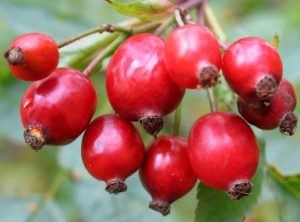
Rosehip seed oil is regarded as one of the most important oils for fighting wrinkles and premature aging and for repairing damaged skin. Research has shown that it helps to regenerate the skin, reduce scars and wrinkles and help skin to regain its natural color and tone. Rosehip seed oil has been identified as an effective treatment for stretch marks, eczema, psoriasis and dry and damaged hair. It can be applied directly from the bottle as a moisturizer or it can be used as an ingredient in your own homemade cream, lotion, facial oil, massage oil or this facial serum. It is a gentle oil and so can be used undiluted, even on sensitive skin.
Dry Brushing your skin helps greatly with detoxification by helping the lymphatic system to cleanse and rid the body of toxins. One of the main functions of the lymphatic system is to protect against invading disease and micro-organisms. It is also responsible for transporting nutrients to other parts of the body.. However, it does not have its own pumping system and is thus dependent on good breathing (deep breathing exercises helps pump the lymph) and circulation. Daily skin brushing can effectively boost a sluggish lymph system. Always brush the extremities toward the heart. Do not skin brush at night since the stimulation may keep one awake.
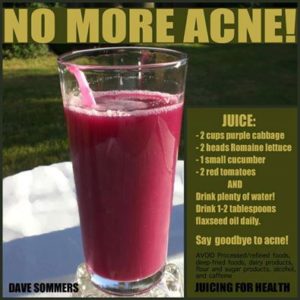


Rejuvenate Your Body and Spirit
Many people in this day and age of showers don’t know about the great detoxing ability of a herbal bath… let alone the stress busting abilities that taking a warm bath can do for the mind/body. The skin is our largest organ of elimination. Herbal baths eliminate toxins from the body.Detoxifying bath:Ingredients:
1. Epsom salt – 1 to 4 cups
2. Baking soda – 2 to 4 cups
3. Add a mixture of grated ginger, rosemary, seaweed, and perhaps lavender, lemon peel, rose petals, and chamomile. You may add sandalwood, ylang ylang or any other herb or essential oil that you like. Make sure to use the ginger because ginger is a good detoxifying agent for your body. Put the herbs in a cloth bag and let them soak in the water for a while.
Epson salts are great for detoxing estrogen from your body, excess thyroid hormones, poisons, food additives, artificial food colorings, artificial food additives and hormones of all kinds.
Baking soda is very alkalizing and helps to alkalize your body.
Skin clears up, you have less anxiety and irritability, and feel more relaxed, soothed, and in general much better. It can also help you sleep better and boost your metabolism and at the same time help you lose weight. Enjoy your herbal bath for 30 to 40 minutes
Coconut Milk Shampoo
1/4 cup coconut milk
1/3 cup liquid Castle Soap
1 tsp vitamin E, olive or almond oil
10 to 20 drops essential oils of your choiceCombine all ingredients in a glass jar and shake well to mix. Store it in the shower for up to one month. Shake before each use.Banana Honey Oat Mask
1 banana
1 Tb honey
1/3 cup oatsBlend ingredients together until you have a thick and smooth consistency to spread on your skin. Wash face with warm water, and then cover it with your mask. Leave it for 10-15 minutes. Gently rinse your face in warm water and pat dry with a towel.Pore Strips
1 Tbsp unflavored Gelatin
2 Tbsp milk
Measure gelatin into a disposable container. Quickly add milk to the container until you have a chunky consistency. Add more milk if you’re uncomfortable with the volume of chunk. Microwave your mixture for about 10-15 seconds. It will become creamier in the microwave. Stir around and start applying it IMMEDIATELY to your face. Act quickly because the mixture solidifies very fast. Let it dry for about 15 minutes. Peel off the crusted mixture until removed. Rinse your face with cool water.Lip Gloss
1 Tbsp Solid vegetable shortening
1 tsp Honey
Unsweetened powdered drink mix (i.e. Kool-Aid)
Hot waterIn a small bowl, mix the vegetable shortening and honey. In a separate bowl, mix the drink mix and 1/4 tsp hot water until it has dissolved. Stir in as much of the drink mix as possible. The more you can dissolve, the stronger the flavor will be. Add one drop of the water mixture to the shortening/honey base. Stir well. Repeat until you get the color/flavor combination you want. Pour into a clean container or old lip gloss pot (Altoid tins work). Store in the refrigerator. This will keep for one week.Peppermint Deodorant
6 Tbsp unrefined coconut oil
1/4 C. arrowroot starch
1/4 C. baking soda
4 capsules Vitamin E oil
20 drops peppermint oil
In a double boiler or in the microwave, soften the coconut oil. Mix everything together until smooth. Transfer to a glass jar. If it becomes too soft in warmer weather, store in the refrigerator. Apply a small amount under each arm with your fingertips and gently rub in.
Honey Cuticle Cream
1.5 oz beeswax
3 oz olive oil
1 Tbsp honey
In a double boiler, melt the wax and oil together. Stir in the honey, and pour into tins or other containers.
Oats & Honey Exfoliant
1 Tbsp honey
2 Tbsp ground rolled oats
1/2 tsp apple cider vinegar
In a food processor, grind oats until almost flour. With a fork, mix in the honey and apple cider vinegar until smooth. Wet your face. In circular motions, gently apply a small amount of the scrub. Leave on for 10-15 min. Rinse off with warm water, and moisturize.
Vanilla Cream Massage Oil Lotion Bar
3 Tbsp Shea Butter
1 Tbsp Cocoa Butter, grated
2 Tbsp Virgin Coconut oil
2 Tbsp Sweet Almond oil
1/4 tsp Vitamin E (1 capsule)
1 tsp confectioners sugar
6 drops Vanilla Essential Oil
In a double boiler, mix Shea and Cocoa butters over low heat until melted. Stir in the almond oil. Remove from heat. Drop in the vanilla essential oil and whisk briskly to incorporate it into the liquid. Whisk in the Vitamin E and sugar. Pour the hot massage oil lotion into ice cube molds or muffin tray. Let cool. Once they’re cool all the way through, remove them from the molds store them in a glass jar until ready to use.
Strawberry Foot Cream
2 oz glycerin
1/2 oz corn syrup
1/2 tsp strawberry extractCombine glycerin with corn syrup, and stir. Mix in extract. Continue stirring until well blended. Transfer to a small glass jar, and rub into your feet as needed.
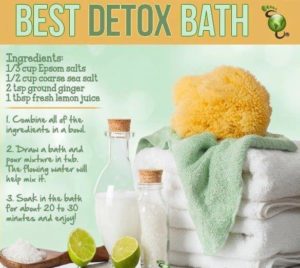 Rosemary & Orange Bath Salts2 C. epsom salt
Rosemary & Orange Bath Salts2 C. epsom salt
1 C. course sea salt
½ C. baking soda (aluminum free, if possible)
2 Tbsp dried orange rind
2 Tbsp dried rosemary
10-20 drops rosemary essential oilCombine the epsom salt, sea salt, and baking soda in a glass bowl. Mix well. Add in the essential oil and herbs. Mix well. Store in glass jars until ready to use.
Lavender and Lemon Bath Salts
2 C. epsom salt
1 C. course sea salt
½ C. baking soda (aluminum free, if possible)
2 Tbsp dried lemon rind
2 Tbsp dried lavender
10-20 drops lavender essential oil
Combine epsom salt, sea salt, and baking soda in a glass bowl. Mix well. Add in the essential oil and herbs. Mix well. Store in glass jars until ready to use.
Lavender and Rose Petals Bath Salts
2 C. epsom salt
1 C. course sea salt
½ C. baking soda (aluminum free, if possible)
2 Tbsp dried lavender flowers
2 Tbsp dried rose petals
10-20 drops lavender essential oil
Combine epsom salt, sea salt, and baking soda in a glass bowl. Mix well. Add in the essential oil and herbs. Mix well. Store in glass jars until ready to use.
Bath Herbs
Full tub bath teas (where bath tub is as full of water as can be) are a little bit larger than the sitz bath. The sitz bath teas can be used as footbath teas.
Lavender, peppermint, chocolate mint, chamomile, catnip, rosemary, citrus
Lavender, roses, rosemary, peppermint, spearmint, chocolate mint
Each single tea bag is filled with herbs and has just the right amount of herbs for a luxurious bath
Collect and dry wild Cedar tips from the woods and pack them into small cotton muslin bags. Herbs or Spices: Use Lavender and Cedar Tips, but any fragrant herb or spice can be utilized. Some ideas include Cardamom, Cinnamon, Eucalyptus, Frankincense, Myrrh, Peppermint, Lemongrass, Lemon Verbena, Rose petals, Rosemary, Star Anise, Spearmint, and White Sage.
Coarsely grind herbs and spices in a coffee grinder to release their scent. The resins and spices will be too dense for a coffee grinder, but you can coarsely break them up using a mortar and pestle.
Organic Bath Tea
Ratios of oatmeal to herbs and salt can vary based on your preferences. For the Bath Tea shown above, we used a ratio of 1/2 oatmeal, 1/4 salt and 1/4 herbs. Be sure to use organic ingredients, reducing pesticides and chemicals that will contact the skin.
organic oatmeal
sea salt
lemongrass
red rose petals
peppermint leaf
Hibiscus flowers
Mix together ingredients until it looks great and smells good. Fill cotton muslin bags with mixture. Tightly close the bag. For use, drop the entire bag into a tub of warm water to soothe and relax.
Organic Tea and Bath Soak
1/4 cup dead sea salt
1/4 cup Himalayan pink salt
1/2 cup Epsom salt
1/4 cup organic calendula petals or flowers
1/4 cup organic chamomile flowers
1/4 cup organic lavender flowers
1/4 cup organic comfrey leaf
1/8 cup organic passionflower
4 mL organic geranium essential oil
2 mL organic sweet orange essential oil
2 mL organic basil essential oil
Bath Herb Mix Recipes:
Recipes are based the three things people want of a bath; to heal dry skin, revitalize and stimulate the mind after a long day, and to relax. Add rolled oats (coarsely ground in the blender) for moisturizing and soothing, epsom salts for muscle relaxation and Celtic sea salt for its healing properties. Powdered milk and citrus peel are also good additions.
Be sure your recipient doesn’t have an allergy. Chamomile is a common allergen to those with ragweed sensitivities. Some herbs should not be given to pregnant women. Your skin is a semi-permeable membrane and anything that comes into contact with the skin will have an effect.
Soothing: Calendula petals, eucalyptus leaves, lemon balm, rolled oats, espsom salts, Celtic sea salt.
Relaxing: Rose petals, lavender leaves, white sage, rolled oats, epsom salts, Celtic sea salt.
Stimulating: Mint leaves, lemon grass, rolled oats, epsom salts, Celtic sea salts, a dash of lemon grass and mint essential oils.
Skin Softening/Healing:
· Chamomile
· Plantain
· Linden
· Rose Petals
· Ground Almonds
· Calendula flowers
· Chickweed
Stimulating:
· Mint (various)
· Lemon Grass
· Basil (various)
Relaxing:
· White Sage
· Calendula
· Rosemary
· Lavender
· Eucalyptus
· Rose Petals
· Thyme
· Bee balm
· Lemon Balm
· Chamomile
· Bay Leaf
· Jasmine flowers
Bath Tea Bag
2 tablespoons dried Peppermint Leaves
2 tablespoons dried Rosemary Leaves
1 tablespoon dried Basil
1 tablespoon dried, chopped Lemon Rind
1 tablespoon dried, chopped Orange Rind
1 tablespoon ground Oatmeal
5 drops Peppermint Essential Oil
5 drops Rosemary Essential Oil
2 drops Lemon Essential Oil
2 drops Orange Essential Oil
Bath Tea
1 oz lavender/rose
1 oz peppermint/rosemary
2 cups borax
Epsom salt
Bath Alternates
Bergamo, thyme, sage, lemon balm, lemon peel, catnip
Soft skin = calendula/ elder flowers.
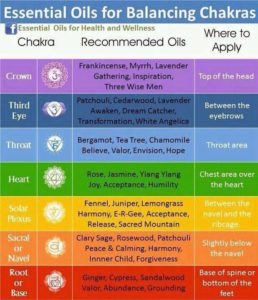


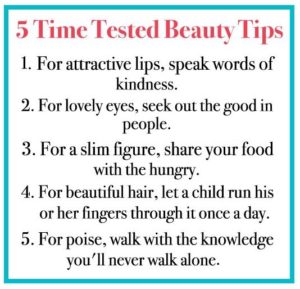
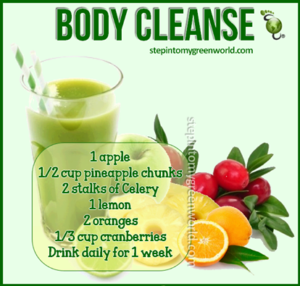



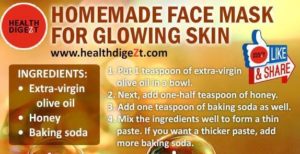

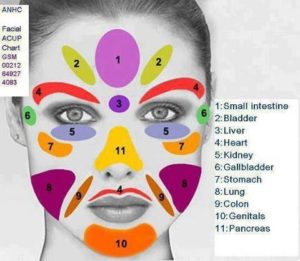

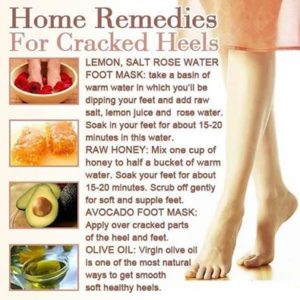

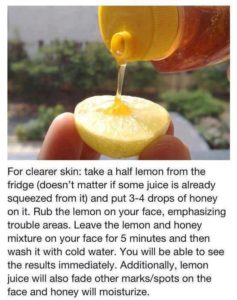
by Susan Dean | Feb 2, 2018 | Health

Time Outdoors and Healthy Eyes
In a matter of just two generations myopia or shortsightedness has risen from 20 to almost 90 percent in East Asian city dwelling children. And it turns out that in most cases it’s not a genetic disorder but rather an environmental factor.
Children who live in cities in China, Taiwan, Hong Kong, Japan, Singapore and South Korea are faced with massive educational pressures. In addition, many East Asian cultures promote staying inside during lunchtime and having a nap.
When East Asian children aren’t in school they are inside watching television, playing video games or reading. On average East Asian children are spending only 30 minutes each day outside exposed to sunshine or filtered light from an overcast sky.
According to Professor Ian Morgan of the Australian National University the reason for the dramatic rise in shortsightedness amongst East Asian city dwelling children is due to a lack of exposure to sunshine.
Exposure to sunshine stimulates the body’s production of a chemical called dopamine, which is known to prevent the eyeball from elongating and in turn distorting the focus of light entering the eye.
Australian children spend up to three hours a day outside and shortsightedness amongst their youth is about 10 percent. The rate amongst children in Britain and the U.S. is higher at about 35 percent whilst in Africa it’s only about 3 percent.
This recent study highlights the importance of children getting outside to help maintain healthy eyes. Getting children to play outside and involved in physical activity helps protect them against the onset of type II diabetes and obesity, vitamin D deficiency and osteoporosis.
Snubbing the outdoors for books, video games and TV is the reason up to nine in ten school-leavers in big East Asian cities are near-sighted, according to a study.
Neither genes nor the increase in activities like reading and writing is to blame, the researchers suggest, but a simple lack of sunlight.
Exposure to the Sun’s rays is believed to stimulate production of the chemical dopamine, which in turn stops the eyeball from growing elongated and distorting the focus of light entering the eye.
“It’s pretty clear that it is bright light stimulating dopamine release which prevents myopia,” says researcher Ian Morgan of the Australian National University, lead author of the study published in The Lancet medical journal.
The average primary school pupil in Singapore, where up to nine in ten young adults are myopic, spent only about 30 minutes outdoors every day – compared to three hours for children in Australia where the myopia prevalence among children of European origin is about 10 per cent.
The figure in Britain was about 30 to 40 per cent and in Africa “virtually none” – in the range of two to three per cent, according to Morgan.
More than other groups, children in East Asia “basically go to school, they don’t go outside at school, they go home and they stay inside. They study and they watch television,” says Morgan.
The most myopic school-leavers in the world are to be found in cities in China, Taiwan, Hong Kong, Japan, Singapore and South Korea, where between 80 and 90 per cent were affected. Of these, 10 to 20 per cent had a condition called high myopia, which can lead to blindness.
“Most of what we’ve seen in East Asia is due to the environment, it is not genetic,” says Morgan, contrary to the common belief 50 years ago.
The researchers, collating the findings of studies from around the world, stressed that being a bookworm or computer geek does not in itself put you at risk. “As long as they get outside it doesn’t seem to matter how much study they do,” explained Morgan.
“There are some kids who study hard and get outside and play hard and they are generally fine. The ones who are at major risk are the ones who study hard and don’t get outside.”
Morgan says children who spent two to three hours outside every day were “probably reasonably safe”. This could include time spent on the playground and walking to and from school.
“The amount of time they spend on computer games, watching television can be a contributing factor. As far as we can tell it is not harmful in itself, but if it is a substitute for getting outside, then it is,” he says.
Morgan says ways must be found to get children to spend more time in reasonably bright daylight without compromising their schooling.
“It is going to require some sort of structural change in the way a child’s time is organized in East Asia because there is so much commitment to schooling and there is also a habit of taking a nap at lunchtime, which is from our perspective prime myopia prevention time.”
Researchers say students working very hard in school and missing out on outdoor light are causing the “extraordinary rise” in the problem. The scientists told the Lancet that up to one in five of these students could experience severe visual impairment and even blindness.
Prof Ian Morgan
Australian National University
“They’ve gone from something like 20% myopia in the population to well over 80%, heading for 90% in young adults, and as they get adult it will just spread through the population. It certainly poses a major health problem.” Eye experts say that you are myopic if your vision is blurred beyond 2m (6.6ft). An elongation of the eyeball that happens when people are young often causes it.
According to the research, the problem is being caused by a combination of factors – a commitment to education and lack of outdoor light.
The scientists believe that a chemical called dopamine could be playing a significant part. Exposure to light increases the levels of dopamine in the eye and this seems to prevent elongation of the eyeball.
“We’re talking about the need for two to three hours a day of outdoor light – it doesn’t have to be massively sunny, we think the operating range is 10-20,000 lux, we’re not sure about that – but that’s perfectly achievable on a cloudy day in the UK.
“Whether it’s a purely environmental effect or an environmental effect playing a sensitive genome, it really doesn’t matter, the thing that’s changed is not the gene pool – it’s the environment.” The time children spend outdoors could be linked to a reduced risk of being shortsighted, research suggests.
An analysis of eight previous studies by University of Cambridge researchers found that for each additional hour spent outside per week, the risk of myopia reduced by 2%. Exposure to natural light and time spent looking at distant objects could be key factors, they said. The studies involved more than 10,000 children and adolescents.
Dr Justin Sherwin and his research team concluded that shortsighted children spent on average 3.7 fewer hours per week outdoors than those who either had normal vision or were long-sighted. “On the other hand, increasing outdoor physical activity could protect against diabetes and obesity, vitamin D deficiency and osteoporosis, for example,” he said.
Shortsightedness is a common eye condition that causes distant objects to appear blurred, while close objects can be seen clearly. Myopia is the medical term for shortsightedness. It is much more common today in the UK and the United States than it was just 30 to 40 years ago. Approximately 1-2% of five- to seven-year-olds in the UK have myopia.
Are they moving? Can you stop them?

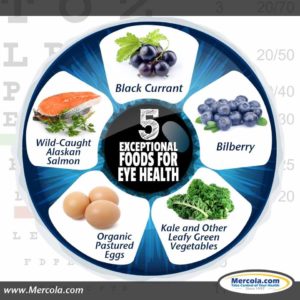

by Susan Dean | Feb 2, 2018 | Health, Kitchen Recipes, Medicinal Recipes

Brain health is essential to all other physical functions. How many of these brain-harming habits are you engaging in?
1 – Unhealthy Diet
The number one risk factor for any disease is a bad diet. Having too much salt, fat, and preservatives in the food we eat increases our risk for developing many diseases. Having diabetes and hypertension affects the way blood delivers oxygen to the brain, and without enough oxygen, brain tissue starts to die. Damaged brain tissue can cause memory and mood disturbances (beyond the physical manifestations).
2 – Smoking
Smoking is a dangerous vice that affects our circulatory system. Nicotine damages the walls of our blood vessels, making them prone to rupture. Even without causing damage to the cerebral blood vessels, the constant vasoconstriction affects the delivery of blood (and therefore oxygen) to the brain. Smoking is also a major contributing factor to hypertension and diabetes – both of which can affect the brain.
3 – Drinking Alcohol
Alcohol is a depressant of the nervous system, affecting a person’s mood and memory. Too much alcohol can cause blackouts, which manifests as the typical loss of memory and prolonged depressed mood in a healthy adult. These symptoms become more pronounced in older people, often being mistaken for dementia or Alzheimer’s disease – or worse, disguising their symptoms.
4 – Lack Of Sleep
Sleeping during the night is when the body recovers and regenerates from the day’s activities. Older people are light sleepers because they spend less time in deep sleep, which makes them easily awaked by noise or other similar disturbances. Without enough sleep, people wake up tired and less alert. Consistently lacking in quality sleep disturbs the brain’s natural sleep cycle, memory retention, and mood. People often have difficulty concentration and are very irritable without enough sleep.
5 – Drug Use
Drug use, whether medicinal or recreational, has the potential to permanently damage our brain. Drugs, by design, are intended to alter brain function – temporarily providing feelings of elation and improving energy levels. But mind-altering substances can cause damage the neuronal pathways to the brain; people who abuse drugs often experience depression and an inability to concentrate. In some cases, drug use affects a person’s level of consciousness and may even cause seizures and difficulty breathing.
6 – Being Unsociable
Regular social interaction is a basic human need. Opportunities to socialize with others are actually opportunities to keep our brain healthy and alert. People who avoid social interaction are prone to developing psychosocial mental disorders because of a lack of social support from either family or friends. Studies have revealed a causal relationship between social isolation and deteriorating mental and physical health.
7 – Low Self Esteem
Self-esteem is one of the building blocks of a healthy mental state. Most mental disorders stem from low-self esteem that leads to self-destructive behavior. When we put ourselves down by comparing ourselves with others and thinking that we are never good enough, it can damage our mood and our relationships with others. Learn to praise yourself when warranted, think you can instead of can’t, and grab the opportunities that come your way.
8 – Not Exercising
A new study in JAMA Psychiatry has demonstrated that three or more periods of exercise per week decreases your risk of being depressed by 19%. University College London researchers monitored 11,000 people born in 1958 up until the age of 50 and discovered a correlation between physical activity and depression. People who were depressed were less likely to be active, while those who were active were less likely to be depressed.
9 – Overuse of Electronic Devices
Links have been found between use of computers and smart phones in the late evening and an inability to sleep – due to overstimulation of the brain. It’s a well known fact that if you spend too long on the computer, you can get “brain fog” and a kind of physical lethargy and lack of motivation. Take breaks. Best of all, have days with no computer use and spend time out in nature doing physical activities.



